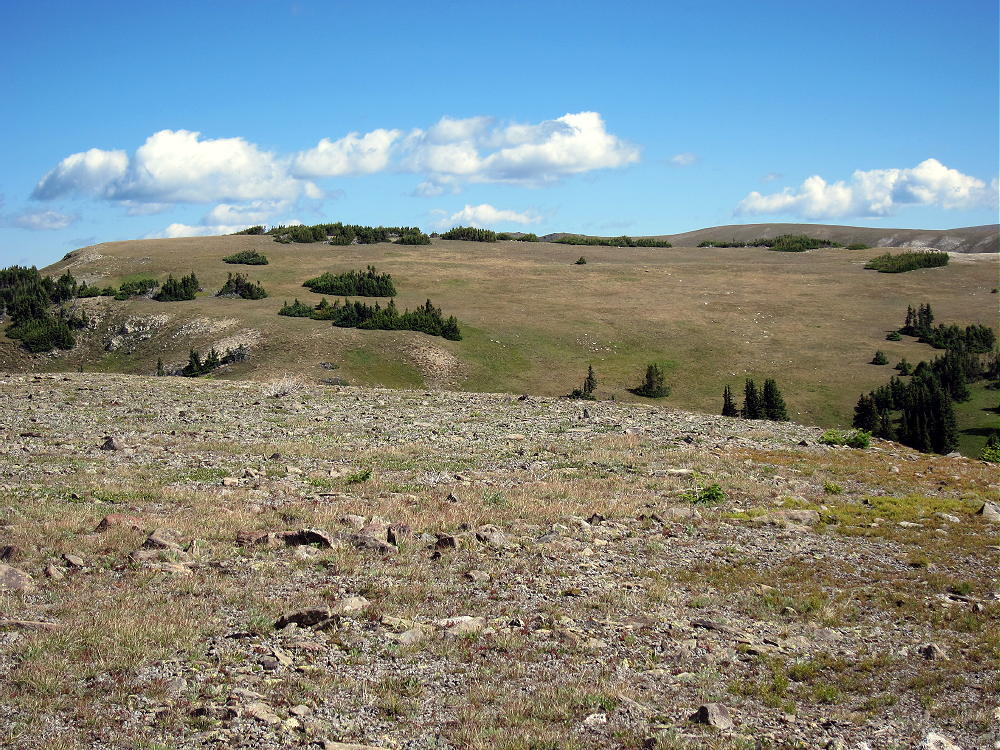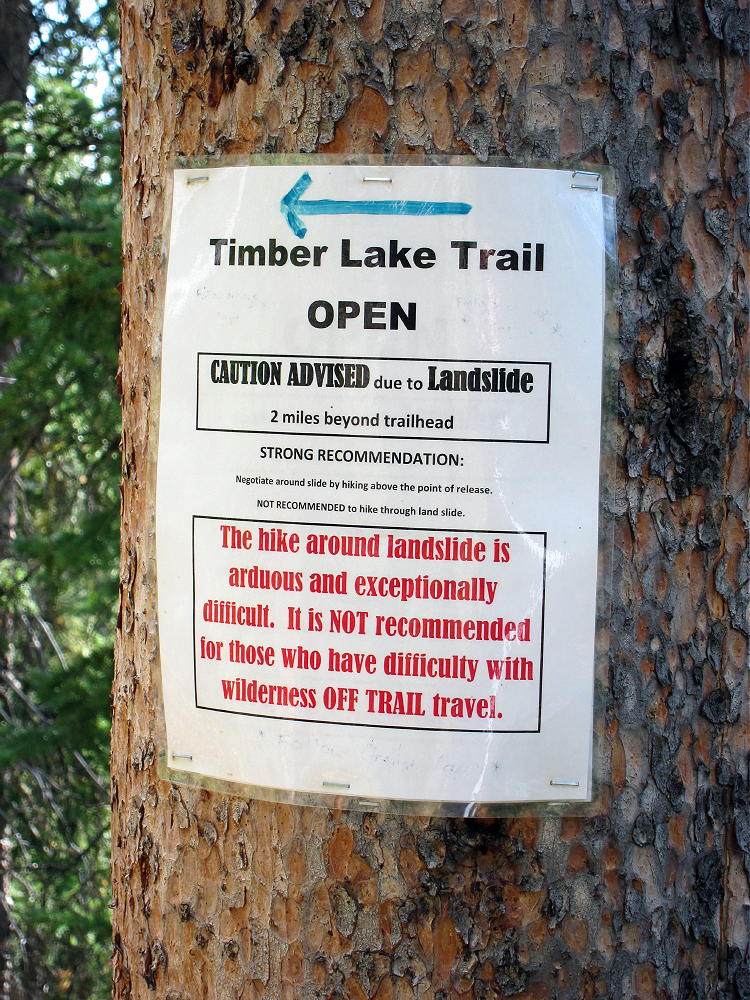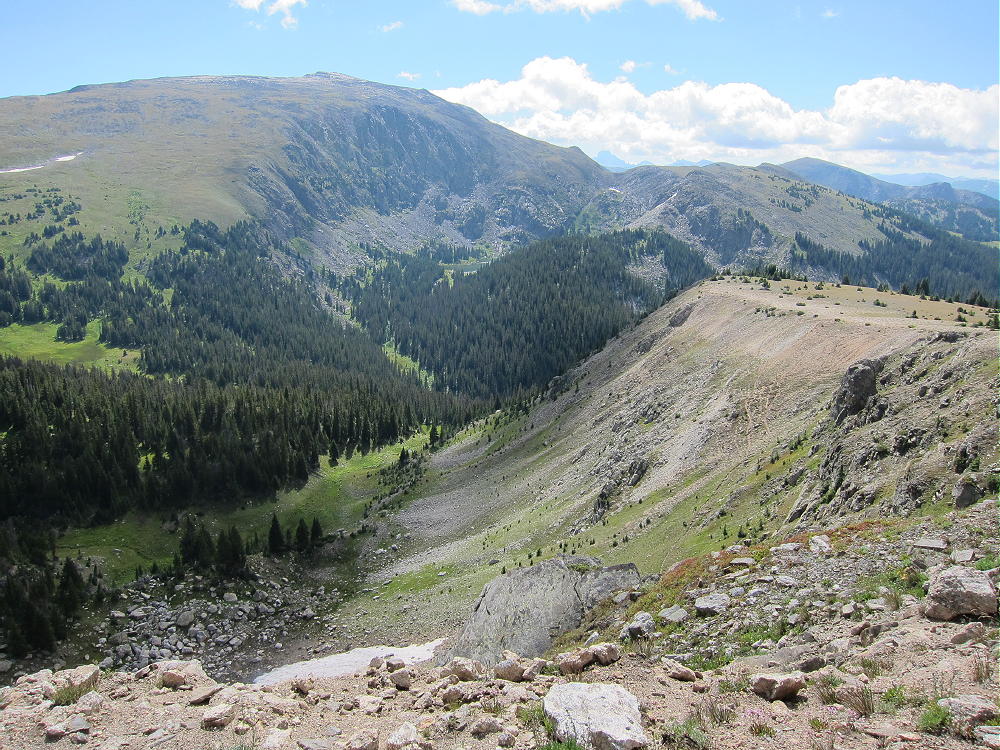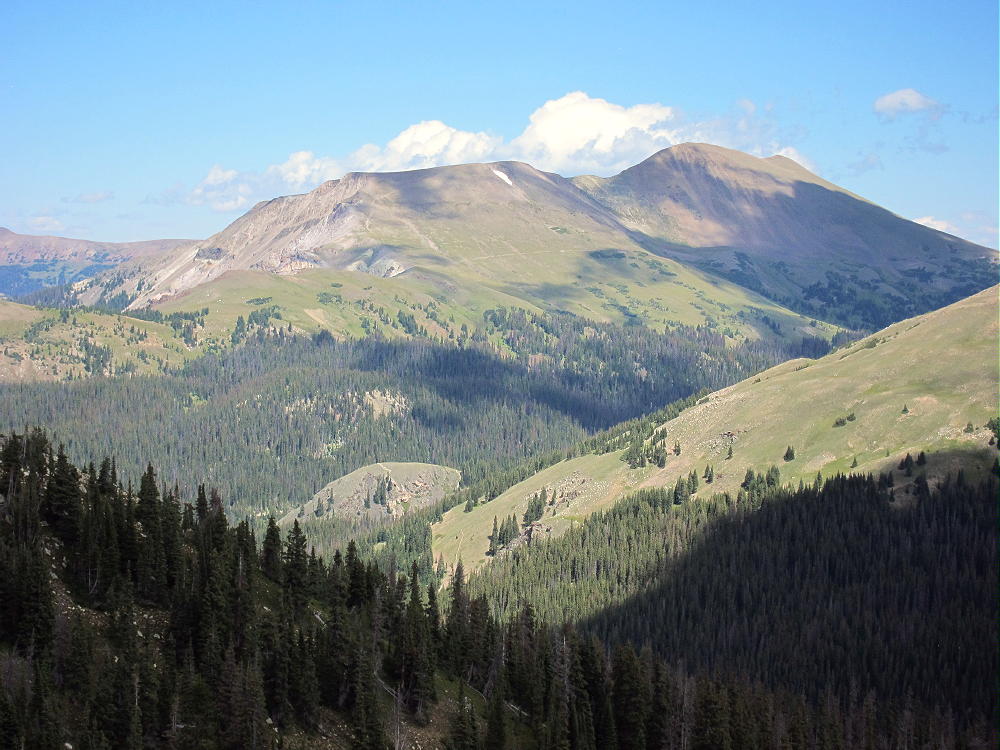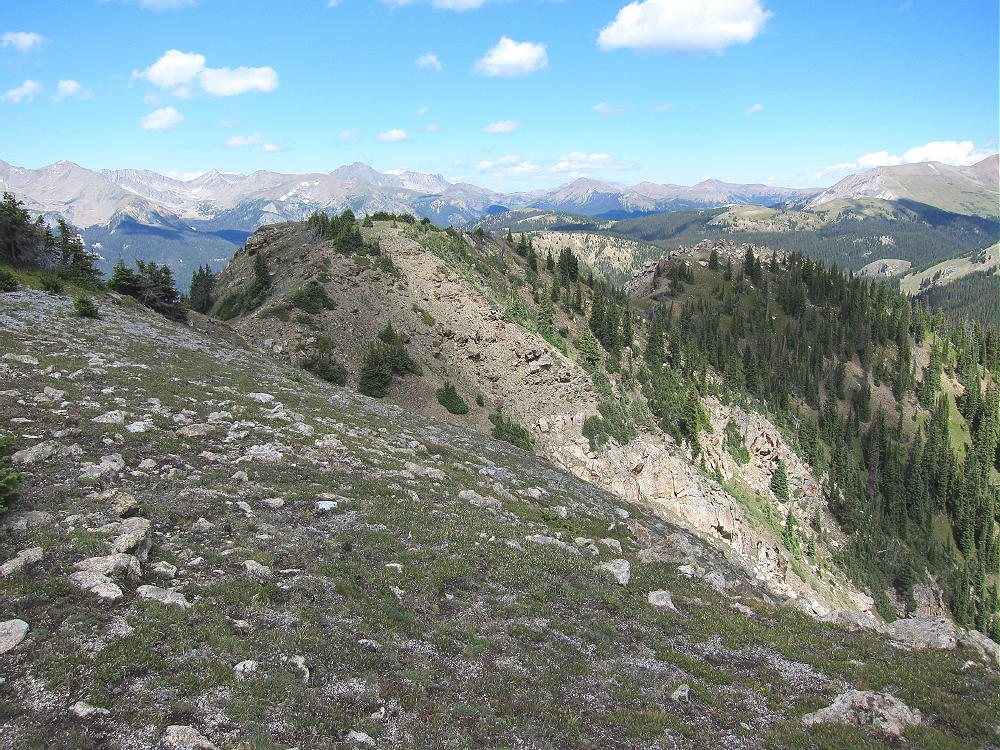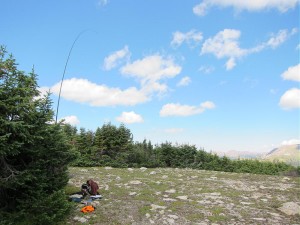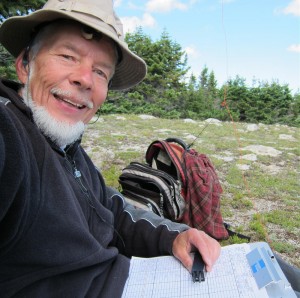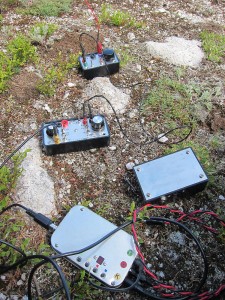W0C/PR-076
Jackstraw Mountain
3567 m / 11704 ft
August 24, 2014
First Activation
By KX0R
Jackstraw Mountain is a minor summit adjacent to Mount Ida and the Continental Divide in Rocky Mountain National Park. Because the peak is in wilderness far from roads, it takes a significant effort to activate it – but it’s fun!
There is no trail to the top of Jackstraw, but the popular Timber Lake Trail runs within 0.6 miles of the summit. The remaining 1-plus-mile off-trail hike is a nice introduction to the sub-alpine zone of the National Park.
To reach the trail-head, drive to Estes Park, continue into the Park, drive over Trail Ridge Road, and descend into the Colorado River drainage on the west side of the Park. Head south for about 1.5 miles from the last switchback, and park at the marked Timber Creek trail-head.
The trail starts at 9050 feet and leads south, gradually ascending the west side of Jackstraw. The route is steep from 9200 to 10,000 feet, and then it moderates. Unfortunately there is a huge mudslide at about 9900 feet, and a tricky detour is required to climb above the head of the slide and back down to the trail. There are strict warning signs; crossing the slide is virtually impossible, because it is a dense 3-D matrix of interlocked trees and branches. Getting around the slide is the hardest part of the hike up Jackstraw. Hopefully the trail will be restored in 2015.
When I climbed Jackstraw, I followed the Timber Lake Trail to about 10,150 feet, and then I headed north up the slopes. After several hundred vertical feet of steep bushwhacking up through fallen trees, the mountain’s slope is more gentle, and the sub-alpine forest opens up. There are obvious game trails. The remaining 1000 vertical feet are along a pleasant ridge leading up to alpine meadows bordered by krummholz thickets. There is a false summit – Jackstraw’s peak is near the north edge of the alpine plateau.
There is a nice alternate route up Jackstraw. Instead of heading up through the steep woods at 10,150 feet, as described above, continue climbing on the Timber Lake Trail to about 10,800 feet; near the “Rockslide” camp site, head up northwest into a deep valley leading up the south side of the summit. There are well-used game trails in the upper levels of this lush wilderness. Follow the drainage up a steep grassy slope to the saddle south of Jackstraw, between the two summits, and climb the ridge to the top. I descended this wonderful route, and I think it’s more scenic than the southwest ridge, provided most of the snow is melted out.
The broad summit is almost flat, with convenient thickets providing protection from wind. You can set up and activate wherever you like in the large activation zone. This peak sees few human visitors, but there are signs of many animals. The views of Mount Ida high above – Specimen Mountain to the north – and Timber Lake in its cirque to the southeast – create a feeling of being deep in the wilderness.
- Specimen Mountain from Jackstraw
- View North from Jackstraw Summit
Because Jackstraw sits immediately below and west of the huge wall of the Continentental Divide, signal propagation to the east is surely reduced, especially at VHF and UHF. This is a wonderful HF site because it’s RF-quiet; I made 36 contacts on 20 and 15M CW, with no hint of a problem in any direction. Jackstraw might be difficult to activate at VHF-UHF, because except to the south, the summit is surrounded by higher mountains.
- First Activation Site on Jackstraw
- First Activation of Jackstraw by KX0R
- KX0R Radio Gear on Jackstraw
It’s probably possible to climb Jackstraw from the trail leading from Milner Pass along the Divide to Mount Ida. When I activated Ida in 2013 and 2014, I had a good look at Jackstraw from above. There is a saddle at 12,000 feet on the Divide, about 1 mile north of Mount Ida. This saddle would be the best place to descend 800 vertical feet west to the Jackstraw saddle at 11,200 feet. From there a craggy ridge climbs 400 vertical feet up the southeast side of Jackstraw. Even if there are problems on this ridge, there surely is a practical route and game trail on the southeast side of the mountain. A detour southwest into the valley described above might work OK. However, the east and north sides of Jackstraw are very steep and should be avoided.
The round-trip from Timber Lake Trailhead to Jackstraw Mountain is about 11 miles, with about 2600 vertical feet of gain – perhaps 2800 vertical feet with the detour around the mudslide.
Weather and time permitting, Jackstraw can be combined with nearby Gray Jay Mountain for a challenging dual activation. I did this when I was there, and it worked out well. See the report on Gray Jay for the rest of the story.
73
George Carey Fuller
KX0R
![]() !! WARNING !! There are old mountaineers, and
bold mountaineers... there are no old-bold mountaineers.
Hiking and mountain climbing are potentially hazardous activities particularly in Colorado with its extreme elevations. I am not accepting responsibility for any death or injury resulting from activations based on my trip reports. Proper training, experience, and personal capability assessment is required - enjoy!
!! WARNING !! There are old mountaineers, and
bold mountaineers... there are no old-bold mountaineers.
Hiking and mountain climbing are potentially hazardous activities particularly in Colorado with its extreme elevations. I am not accepting responsibility for any death or injury resulting from activations based on my trip reports. Proper training, experience, and personal capability assessment is required - enjoy!











